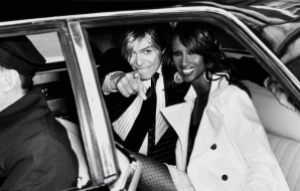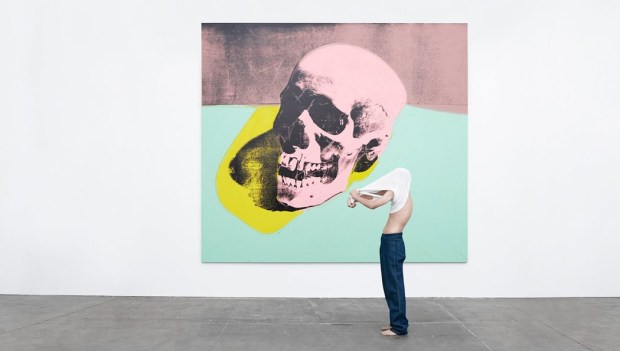 Raf Simons’s first Calvin Klein ad is a perfect mission statement for a new era.
Raf Simons’s first Calvin Klein ad is a perfect mission statement for a new era.
This season’s spate of advertisements is, largely, absolutely fantastic. So fantastic, in fact, I went back and forth about including an exclamation point in this paragraph, but decided not to deploy one for reasons of self respect. The quality label-ambassador pairings we see this season perhaps reflect a deep thoughtfulness about brand identity in a time of industry upheaval—communicating a brand’s meaning is more important than ever when designers are playing musical chairs and consumers are saturated with digital media. Here are some of the high achievers.
Jude Law for Prada

I love this. I love this so much that I would wallpaper my apartment with it, regardless of my deeply held opinion that Jude Law is the platonic ideal of human beauty. This minimal shoot by Willy Vanderperre nails the essence of Prada: practical, intellectual, and offbeat. Law lounges contemplatively amongst sand dunes in an array of unfussy and tailored shirts, pants, and even sandals (my rule about men in sandals—that it should never, ever occur unless one is an Olympic swimmer or any other type of water sports professional— is null and void when it comes to Prada, they of ugly-chic splendor). Law, despite actually being the most handsome man in the world, is the perfect choice for Prada, as both actor and brand are at interesting stages of their lives.
Law, now in his mid-40s, is taking a variety of unusual and supporting roles, rather than the typical leading man parts, including in Anna Karenena, The Grand Budapest Hotel, and Genius. At his Times Talk last June, he spoke to this shift as being both more natural than calculated and that collaborating with interesting directors is his main criterion when considering roles. So too, is Prada at a moment of transition. No longer the ‘it’ brand of the moment, Prada is reconnoitering the rapidly-evolving fashion landscape quietly, and perhaps in a reactionary way. Miuccia is carefully observing and pointedly not participating in the conversation around the turbulence of the designer revolving door, see-now-buy-now, and co-ed clothes, which, in a way, is reflective as the label’s status as a true luxury brand — not having to cater or pander to anyone or any trend in particular. She continues to produce quiet, sophisticated, and interesting clothing, almost as if to please herself. She will make large changes to brand strategy when she’s good and ready, but not before a great deal of consideration.
This collaboration is sublime; an alignment of artistic renaissances. and making old favorites current ones.
Grade: A
Charlotte Rampling for Loewe
This is a magnificent pairing — the most unusual and enigmatic actress of the twentieth century posing for Loewe, a recently-revived Spanish luxury label helmed by wunderkind Northern Irish Jonathan Anderson, known for his interesting silhouettes, proportion play, and gender-bending designs. Anderson is himself somewhat inscrutable, and his designs mercurial — some more intellectual, others more commercial — and entirely avoidant of the celebrity PR circuit — one rarely seen his clothes on a red carpet, and when one does, they’re on fellow sublime weirdo Tilda Swinton. Rampling, exceedingly private and dismissive of Hollywood, is the perfect face for the brand; a real meeting of the minds between designer and muse. I only wish this Jamie Hawkesworth-shot series was more visually engaging, and more suggestive of a narrative — a more fleshed-out setting would do the trick. The dark palette, too, makes it easy to visually skip over if one doesn’t have Rampling radar. Perfect casting, unremarkable execution.
Grade: B+
Art for Calvin Klein

Raf Simons loves contemporary art. As demonstrated in the excellent yet ungrammatically titled documentary Dior and I, he frequently visits museums and galleries in search of inspiration, and has both collaborated with and referenced the artist Sterling Ruby while at Dior, and in his eponymous menswear line. I was curious to see what the first Calvin Klein ads would look like under Raf — he’s not one for cozying up to celebrities in his personal life or casting them in ads unless contractually obligated, yet Calvin Klein is, historically, a celebrity-driven brand, particularly in its advertising.
Instead of famous people, Simons cannily casts art by Andy Warhol, Richard Prince, and his bff Sterling Ruby in starring roles in the Willy Vandeperre-shot campaign, letting the paintings and their artists take center stage. Still, he plays with Calvin Klein tropes of denim, underwear, and young couples, giving them subtle, modern updates; the result is a little cleaner and a little more European. With the fun and accessible choices of art and the classic branding motifs, Raf acknowledges the label’s pop-cultural roots, but reframes them in a restrained way that is much more ‘him.’ This is a great first ad campaign under the new rule. I am so excited to see what’s to come, and how art will factor in in both the clothing and the advertising. Basically I hope this becomes an empire of Jil Sander.
Grade: A+



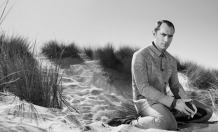




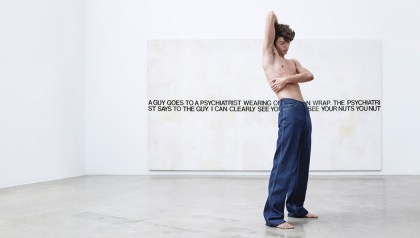
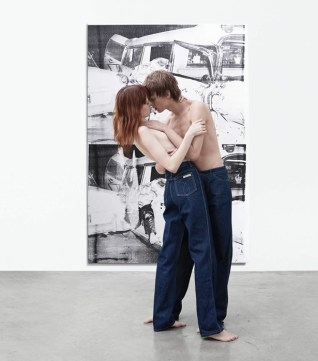


 Stella McCartney’s F/W 2016 Campaign
Stella McCartney’s F/W 2016 Campaign



























































